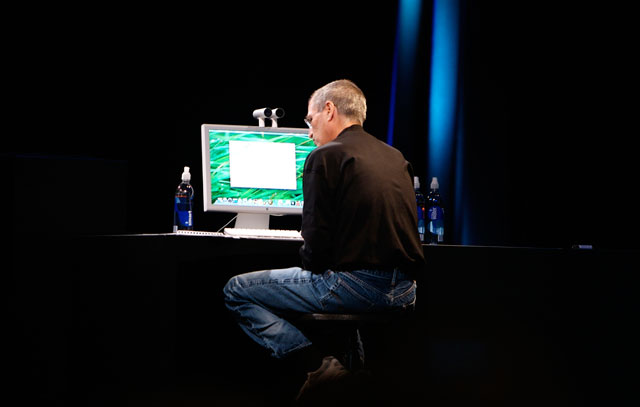 Apple has hit a plateau. Its quarterly earnings results revealed flat revenues, falling iPad sales and markedly lower profits. But the company is not doomed to collapse, despite what some of the more excitable pundits are claiming.
Apple has hit a plateau. Its quarterly earnings results revealed flat revenues, falling iPad sales and markedly lower profits. But the company is not doomed to collapse, despite what some of the more excitable pundits are claiming.
Apple is clearly going through a rough patch. It made US$6,9bn last quarter compared to $8,8bn over the same period in 2012. This is the first time the company’s profits have declined for two consecutive quarters in over a decade.
The iPad, once the star of Apple’s earnings reports, is the main culprit. The company sold 14,6m tablet computers, 14% fewer than it did in the second quarter of 2012. Given the fat margin Apple earns on each device, selling 2,4m fewer of them was always going to hurt its bottom line.
It wasn’t all bad news. iPhones now account for over half of Apple’s revenues, and it sold 20% more of them than it did over the same period in 2012. But analysts pooh-poohed these numbers, pointing out that Samsung has swallowed 33% of the global smartphone market compared to Apple’s 14% share (never mind that Samsung’s profits actually shrank last quarter).
Some believe these results are a prelude to a long period of low growth and high profits, similar to the one Microsoft has found itself in since the turn of the century. There are worse fates. Although its share price isn’t soaring like it did in the 1990s, Microsoft has paid out tens of billions of dollars in dividends.
Others are less optimistic. Without the disruptive genius of Steve Jobs, they say Apple is doomed to repeat the pattern of the 1980s. Cheaper competitors such as Samsung and LG will eat away at its juicy margins and ultimately cripple the company, just as PC “clone” makers did to the Mac. Professor Clay Christensen of the Harvard Business School is the most eloquent proponent of this “innovator’s dilemma”.
But there are three good reasons to believe that Apple will neither ease into middle-aged profitability nor crash and burn. The first is that all of its important products are in high-growth markets.
Smartphones currently account for slightly less than 50% of the nearly 2bn units sold by the global mobile phone market each year. Within five years, they will account for 75% of it. If Apple were to capture 14% of this growth, it would sell an extra 65m to 70m iPhones per year, earning it an extra $10bn in profit. Even if it only manages half that number, it will still remain a hugely profitable business.
The same applies to tablet computers, a market Apple essentially created from scratch. At the moment Apple accounts for 35% of global sales. If the market keeps growing at its current rate, it will more than double every two years until 2017. Even if Apple’s market share is cut in half, it will still sell more iPads every year than it did the year before.
But growth alone is not enough. The PC market was still growing strongly for most of the last decade, but Microsoft failed to keep pace. And Apple remembers the high-growth carnage of the 1980s all too well. This time, though, it has an ace up its sleeve: its “ecosystem” of software and services.
One of the factors that nearly killed Apple in the 1980s was the limited quantity of software available for its Macintosh computers. Windows-powered PCs, on the other hand, were compatible with everything.
This near-universal compatibility created powerful network effects: growth in users enticed more software developers to write for Windows instead of Mac. This in turn encouraged more customers to opt for Windows, and so the virtuous cycle continued. Network effects are, in essence, what allowed Microsoft to dominate the software market for three decades.
But this time, Apple has harnessed its own network effects. Its App Store has allowed software developers to sell tens of billions of apps to hundreds of millions of Apple customers. Many customers have spent hundreds or even thousands of dollars on apps over the years. Were they to leave the Apple ecosystem, all these apps would be left behind.

The same logic applies to the phenomenally successful iTunes music store, and to a lesser extent to Apple’s other services such as iCloud and e-mail. This ecosystem exerts a powerful gravitational pull on Apple’s customers. For these loyalists, price is not an important enough factor to tempt them away from their iPhones and iPads.
Yet Microsoft enjoyed both a growing PC market and an unrivalled ecosystem for most of the last decade. What’s to stop Apple from slipping into the same comfortable rut? It has a quality very rare in enormously profitable companies: a willingness to disrupt its own markets.
It did so with the iPod by bundling all the same features into the iPhone and iPad. It did so with the MacBook line by launching the MacBook Air and iPad. And, given a chance, it will do so again with any of its other products should the need arise.
Alas, the only way Apple will silence its critics is to launch a new hit product. The last time it did so was in 2010 when it launched the iPad. The market is now hungry for something new and no amount of profitability, growth or even common sense will make that hunger subside. — (c) 2013 Mail & Guardian
- Alistair Fairweather is the GM for digital operations at the Mail & Guardian
- Visit the Mail & Guardian Online, the smart news source




